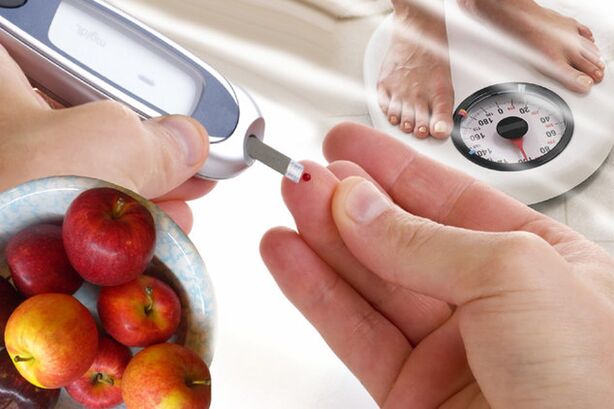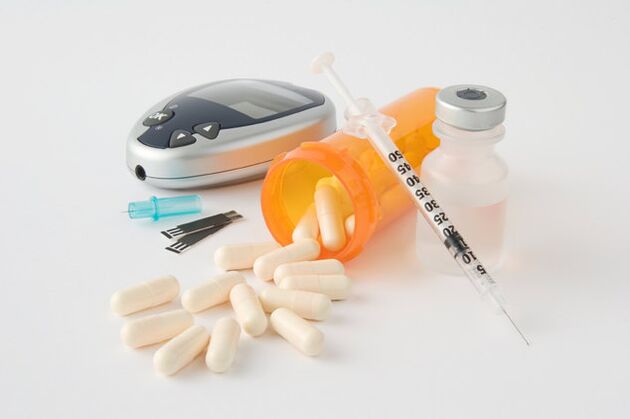Insulin deficiency is a disease known to mankind since ancient times, but despite this and the speed of development of medical technology, it is extremely difficult to gain new knowledge about the disease. difficult to identify it in the early stages. Many patients are not even aware of the presence of diabetes, claiming that these symptoms are caused by hormonal changes in the body and other diseases. Diabetes negatively affects health and metabolism, so early recognition and timely treatment is extremely important.
What is diabetes?
Diabetes mellitus is a chronic endocrine disease that develops due to a lack of insulin. A hormone synthesized by the pancreas that is involved in the breakdown of sugar and the transport of glucose through the blood to organ tissues to provide the body with extra energy. In the event of a lack of insulin, the amount of sugar will increase significantly, negatively affecting the entire body.
The reason for the development of the disease
This disease occurs most often when the following causes or conditions are present:
- Genetic factors, especially if the father has diabetes, the chance of having diabetes is much higher in the children than the mother.
- Improper nutrition - abuse of foods rich in calories, glucose and carbohydrates.
- In the presence of excess weight, and with the second and subsequent degrees of obesity, the likelihood of developing diabetes increases to 80%.
- Sedentary, low human activity.
- Frequently experiencing stressful or depressive situations. A severe shock or nervous breakdown can also cause illness.
- Long-term use of drugs of a certain class, for example, hormones, diuretics or choleretics.
- The presence of a viral infection in the body (chicken pox, flu, rubella).
Symptoms of the disease
Warning signals that are evidence of the presence of disease include:
- The feeling of constant thirst, which does not go away even after drinking a lot of alcohol.
- Frequent urination, especially at night. This causes some discomfort and inconvenience, violating the established lifestyle.
- Drops of urine that remain on the cloth, when dried, look like traces of dried starch (white and dense spots).
- The person complained of being tired and sleepy.
- Visibility is drastically reduced, all visible objects are blurred.
- Often accompanied by tingling and numbness, especially in the palms and soles.
- The wound is slow and very poorly healed, even the smallest and insignificant.
- Patients worry about itching, especially intense in the groin area.
- Sudden weight loss for no other obvious reason.
- Strong hunger is hard to satisfy.
It is important to remember that many of the symptoms are already present when there is a shortage of insulin in the body and the irreversible processes of disrupting hormone production by the pancreas have begun. It is extremely difficult to identify the disease in the early stages, so 80% of patients are not aware when the disease is present.
Types of diabetes
There are 2 types of diabetes, which have distinct differences despite some similarities.
- Type 1 (insulin dependent) diabetes is a disease characterized by the death of pancreatic beta cells, the main role of which is the production of insulin. As a result of this process, a hormone deficiency occurs, which causes diabetes. The causes of the development of the disease include a violation of the immune system, the presence of viral infections in the human body. As a rule, this type of disease affects children and adolescents. The only treatment option for this disease is regular insulin injections for the rest of your life.
- Type 2 diabetes is a disease that affects people over the age of 30 and develops because the body, cells of tissues and organs produce insulin due to a lack of awareness of the pancreas. Due to the inappropriate response of the body to hormones, glucose accumulates in the blood and causes negative processes in the body. In case of untimely treatment, insulin production completely stops, since the increased level of glucose in the blood adversely affects beta cells and contributes to their destruction.
Diagnosing diabetes
To diagnose the disease, you must contact the clinic to see an endocrinologist who specializes in this disease. For the examination, the following procedures and exams are performed:
- Fasting blood test for blood sugar. In some cases, when the patient is at risk, stress testing is performed to determine glucose tolerance.
- Conduct a urine test to find the sugar content and determine its level. A urine test for acetone may also be done.
- It is also important to conduct an analysis of the glycated hemoglobin setting, which helps determine average blood sugar levels over the past three months.
- It is important to remember that diabetes is a chronic disease that cannot be cured, so regular maintenance treatment is required to maintain normalcy.

Cure
The mainstay of treatment for type 1 (insulin-dependent) diabetes is regular insulin injections. Thanks to modern medical tools, injecting is much easier; insulin pumps and pens are used for this. The insulin dose is set individually for each patient and should not be changed on its own. The amount of insulin depends on the blood sugar level, the presence of other comorbidities (eg, obesity), the patient's lifestyle.
In the case of incomplete pancreas failure, the doctor can prescribe drugs that stimulate the production of hormones in the human body. To eliminate insulin resistance in the body, other classes of drugs can be used to eliminate insulin resistance and help maintain human health. An important factor is the observance of a special diet, in which foods are selected with a minimum content of sugars, carbohydrates, and also stimulate the pancreas.

Disease prevention
To avoid the development of the disease, it is important to adhere to the recommendations of an endocrinologist, which will help maintain health and not fall into the risk group. Prevention methods include:
- Regular blood sugar testing is recommended especially for those at risk. People over the age of forty should conduct this study regularly, at least twice a year.
- Change your eating habits, switch to a balanced diet with mostly healthy foods - fruits, vegetables, fish, lean low-glucose meat. In addition, it is advisable to follow a diet and distribute food intake into three equal meals and several snacks.
- Performing simple exercises daily, will help normalize weight and reduce the likelihood of developing diabetes.
- Normalize weight, which will help reduce the likelihood of developing diseases.



























